They Will be Talking About You: 10 Types of Customers Explained
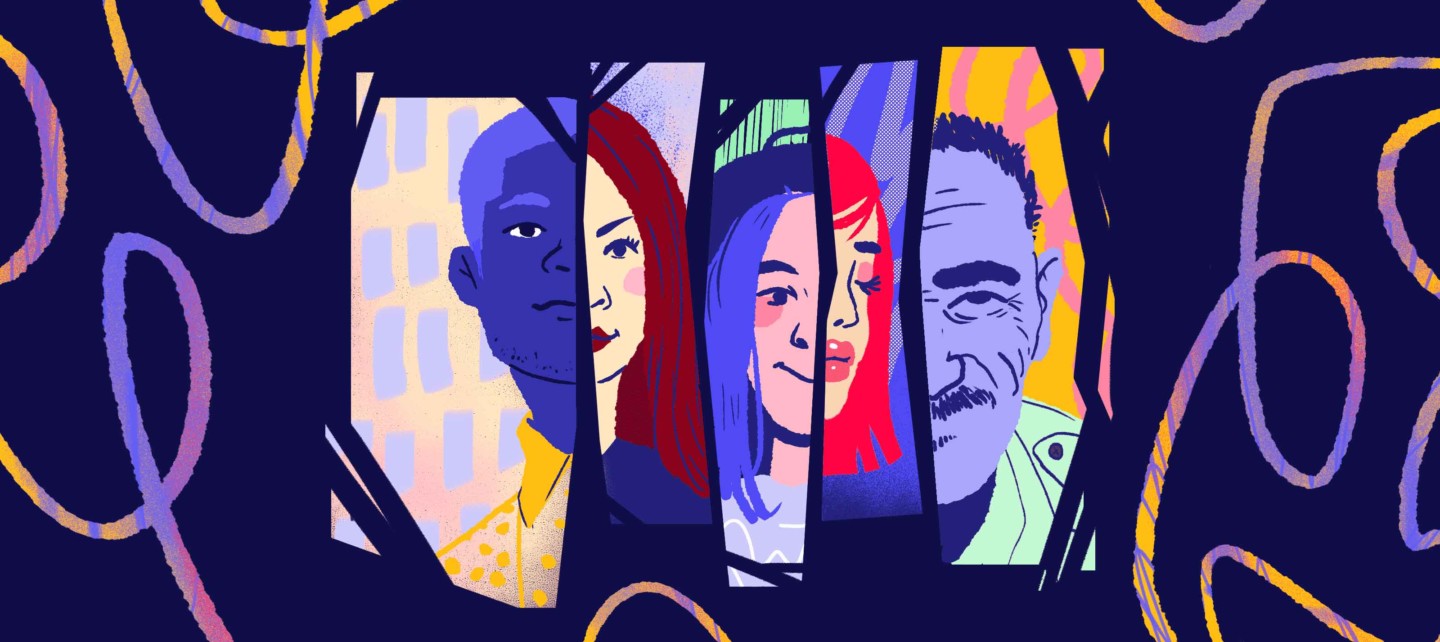
The one who’s always right. The driver of your business engine. The market trends maker. Moody and picky ─ the customer. Here is who needs the sales, support, and marketing trying to meet daily.
Wanna make sales? Understand the person behind you. The better you treat your customers the more they’ll spend.
“Just ask” they say. But when the first prospect answers your questionnaire, the second leaves.
It seems you’ve discussed everything and just yesterday they were ready to pay. Today they decide to research deeper and tomorrow turn into the “just looking” category.
Psychoanalysis, telepathy, palantír, tarot card reading ─ what skills should you have to identify the potential customers in the first minutes?
A good marketer can read customer behavior, define their intent, and offer the corresponding value. So, start with a customer classification basis. But it doesn’t mean you should refuse the others?
In this article you will find what types of customers are there and how to make them happy, i.e. help them make their purchasing decision…
Read on!
What do we mean saying “types of customers”?
Customer is a company or a person that buys
products or services from your company.
There is a journey everyone completes while choosing and purchasing ─ a customer journey. You definitely know it: awareness, purchase, advocacy.
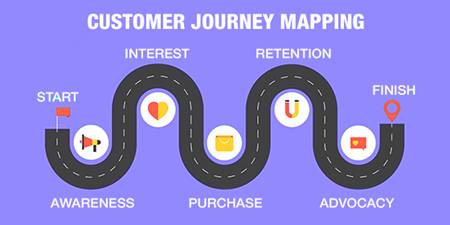
Every day your website is visited by people with individual intent: to look around, to buy, to ask for help, etc. Moreover, it can be one and the same person.
Interpret it wrong and as a result you’ll waste customer time or even cause irritation.
Based on the customer journey stages business is used to cluster customers to 10 behavior types and 10 specific methods of their treatment:
Awareness:
- “I’m just looking around”
- Researcher
- Discount hunter
- Bargain master
- Potential customer
Purchase:
- The new one
- Impulsive customer
- Disgruntled
Advocacy:
- Loyal
- Lost
How? That is the next question.
How to identify the type of customer?
There is usual segmentation based on location, gender, age. These are what we take into account when defining the target audience. But what about real-time qualification? When you have to understand who you are talking to. Customer experience, needs, frustrations ─ in other words, the behavior analysis.
So what are the criteria for customer type identification?
First, that’s events tracking analysis:
- The source they came from (Google SERPs, direct link, Ads, socials, etc.)
- How many times they visit your website
- Time on the website, page
- Number of items viewed
- If they visit the pricing plans page
- How many items they have purchased
- How many times
- Scrolling data
- The number of discount items viewed/purchased
- Subscription or unsubscription to email, social media
- If they read the chat message
- If they ask for help
Read also: How to organize data collection
The second level is the researchers leave in the customer card about the specific customer experience with your brand. But without the first one, won’t be the second. So let’s focus on the customer types identification.
10 types of customers and how to treat them
There are stories of people who interact with your website, Ads, socials at the different purchase stages. If you want to convert them, find an individual approach to each type of customer and use this info in marketing, sales, support.
Let’s dive into the variety of the customer’s moods and find out what influences their purchase decision.

1. “Just looking arround” Kate
She enjoys window shopping offline as well as online. Having her lunch Kate browses her socials and among a variety of ads sees yours. Intrigued with a bright banner she comes to your website.
Kate wants to explore the goods you offer, so she scrolls the pages without going into details. There is no particular item she wants to buy. But maybe the next time, because if the website is good, she might be back and make a purchase. “I’m just looking around” is the answer you’d probably heard from her in real life.
But we are online?
How to convert the looker type into a customer?
As you see Kate is about a quick look, so make sure that your website is easy-to-navigate.
Marketing task is to get Kate’s attention for a long so that she can catch the offered value. That might be done by the eye-catching design of the landing pages and product cards. Make an accent on conversion blocks design and CTA.
Since the primary goal is to get her contacts for further nurturing, you have to work over the value. The secondary goal ─ is to make Kate return. Emails are a great way to do it. So, encourage her to sign-up for your newsletter.
How to support this customer type?
Just remember yourself and an embarrassing feeling when a sudden “Can I help you?” interrupts your shopping. The same story. Visiting your website for the first and even second time Kate usually does not require live consultations. It’s more about a softly-softly approach like welcome chat messages.
Don’t you have one?

2. Researcher Flynn
This guy is a kind of a bookworm and really serious about shopping. Only the best value-for-money option is about Flynn. This is not the first time he visits your website. There can be hours spent exploring the product features, pricing, testimonials ─ collecting all the possible info.
He will subscribe to your socials, newsletter ─ a real stalker. And when you are ready to show him “thanks for the purchase” page, Flynn leaves?.
No worries. He probably went back to the reviews site. But your task is to keep him on your site.
How to convert researcher type into a customer?
Keep on your website all the possible data he needs to make that decision. That goes for some text content as well as for the visual one. Everything Flynn might need to make an informed decision:
- Product features, tech details
- Instructions
- Pricing features comparison
- Comparison with competitors
- White papers
- High-quality photos
- Videos
- Customers’ testimonials
Show your expertise. And finally make it easy to find, access, and download. That also means easy navigation, links to useful content, link backs to your website on the review sites.
How to support this customer type?
Flynn is eager for information, so he’ll be happy to read some product use cases, helpful articles, videos. You may offer that in the form of proactive chat messages on the website, on the FAQ, support page, newsletter subscription.

3. Potential Linda
She heard about your brand before at work and from friends too, that makes her really interested in the goods you offer. Once Linda has already subscribed to your newsletter. And now the time has come. Linda googled your website searching for a specific product.
There is no point in scrolling the main page. Quickly navigating in the menu bar she finds the product landing. Saving valuable time Linda reads the essential info, but still hesitates about a purchase. The good news is that there is a live chat to ask for important details.
Here is the moment you can help her to make a decision. Use that to convert her into a paying customer.
How to convert the potential type into a customer?
Focus Linda’s attention on the product/service value. What she will get after buying it. That is a jib for marketing as well as for sales. Provide her with links to relevant use cases, testimonials, and landing pages. Demonstrate the options to get help at any time: support number, email, call back, welcome chat message, product demo, FAQ, instructions.
How to support this customer type?
Every second a potential type’s waiting for the answer reduces the chance for the positive purchase decision. When the reply time matters, it’s better to use chatbots for instant short answers. Take advantage of the knowledge base and share relevant articles automatically to help Linda.
Read also: Answer questions before users ask: create your own Knowledge base

4. Discount hunter Stu
It was the third year of university when Stu heard about your product for the first time. This spring he saw your update and it was love at first sight. But the price was too high. “Ok, be patient” said Stu and started waiting for a discount.
And he did. Due to his unswerving nature, he can compete even with Hachiko.
To catch the discount he followed the brand, his owner on all the possible socials, subscribed to the newsletter, and read every piece of the info you share. There are more than a thousand visits to your website on his client card. And I think it’s time to pass the Real Stalker Award to Stu ?
How to convert discount hunter type into a customer?
When you’ll start a sale Stu will be your first customer. But what about now?
There are a few tricks for marketers. Offer an exclusive deal “buy 4, get one free” and turn him into a bargain customer type.
Thus, you can keep discount hunter customer types happy and won’t lose money.
Anyway, there is hardly any chance to upsell your product to Stu. He will leave after the first purchase, or once the discount is unavailable. But you can prevent this. Offer something that he can’t get elsewhere ─ the cherry on the top of your deal. For example, great customer service.
It’s important to provide Stu with a clear sale’s details and instructions. Nobody likes to be cheated. Make sure he can ask for help: contacts, call back, chat widget.
What about support?
Stu likes proof. So, he may ask support or sales to clarify the product details or to check if he understood it right.
Thus, it’s better to synchronize your team in terms of understanding the sale details and exceptions (like special offers for Stu).

5. Bargain master Joe
Once in the store, Joe was offered a good deal. There wasn’t any sale announced. Just because Joe purchased 2 last items, he got 3rd free. That moment he realized the truth ─ you don’t have to pay the full price. Since that time he never did.
Bargain Joe is a type of customer you won’t attract by a simple discount. It is the first and only time he is on your website. Looking for something interesting Joe is ready to buy a lot of items. Having spent a lot of time on the product page clicking all the images. Yes, Joe is interested, for sure. But there is a thing, he won’t buy it even if he likes the product.
Bargaining master has subscribed to your newsletter, explored product features, added its 10 items to a cart, asked support for shipping details. But intends to exit the website. Why? There is no special offer in the price section. Neither a pop-up nor a chat message offering personalized deals. And support refused his request for an extra discount.
How to convert bargain master type into a customer?
There is a list of tricks. Offer:
- a next purchase discount
- a discount for large product quantity
- a limited functionality for a discount price
- free shipping
- the lower price of the year subscription compared to monthly (for services)
You can write it on the product page or card. But to find it this customer type will have to look through several items. It’s better to create discounts or coupons landing with all the goods for a discount price or to highlight them in the list.
The nice practice is to add trigger messages on the website to offer a discount in a pop-up when the customer is going to leave.
A simple discount can work too. Just make an accent on such an item, and when Joe is interested, offer him something to upsell?
What about support for this type of customer?
Here’s nothing new: just make sure your team knows the company’s special offers and requests (a human or a chatbot) customer questions during the first seconds.

6. New customer Jane
Winter is coming, and Jane starts thinking about seasonal shopping. Browsing Instagram feed she sees your Ads. Since Jane is looking for something like your product and the Ads content was really impressive, she visits the website.
It is the first experience with your brand, but there is no doubt she liked it. Jane purchases the product during the first session.
So, here it is, new and shiny. But Jane is a bit lost about how to use it.
Your task is to help her to succeed with a new toy.
How to support a new customer type?
It’s all about onboarding. The better you’ll explain how the product works, the more value Jane can bring in the future.
Guide her to success with:
- Email sequence campaign explaining the product value, setting up details, possible use cases.
The key to customer success with your product lies in understanding the value of choosing your service or product offers. I mean you have to convince the customers that now they own the perfect solution to their problem.
- Knowledge base articles on how to configure and use a product
- Company story page
- Product tutorial page where you can provide a customer with a step-by-step pop-up tour (for SaaS)
- Live customer support option. No matter how cool your onboarding is, it can’t cover all the possible questions. Talking to real people is a must-have part of the new customer support process.

7. Impulsive Rebecca
The shopaholic? No. She is just in a perfect mood. The weekend, the sun, and good sleep made Rebecca feel great. It’s one of those lazy and watching YouTube days. Here is one more Ad interrupting a video. Your product Ad.
But there is no irritating skipping. Instead, she continues watching. “Wow, It seems interesting. I don’t need it. But I want it now” having thought Rebecca. And here she is on the product landing clicking the BUY button.
What convinced her to make a purchase? It was cute.
How to convert the impulsive Rebecca type into a customer?
The first trigger she reacts to is sale banners. Bright design, attractive CTA, and limited-time discounts did their job.
The good strategy is to promise a discount on certain products or services for the next customer visit
Buying impulse is a short-time notion. There are key service tips to offer this type of customers to keep it:
- The fewer clicks separate Rebecca from the buy button, the higher chances she will pay. Make sure your site is easy to navigate and nothing distracts visitors from an impulse to purchase.
- Easy checkout. Reduce the number of clicks and information needed to purchase.
How to support this type of customer?
Be quick and convincing. Answer Rebecca’s questions in a short manner. The answer time matters as usual. If it takes too long, the customer can change the buying decision and leave the website.
The best way to reduce the answer time is to let a chatbot provide the first help. Instant replies, proactive welcome messages, knowledge base articles sharing — Dashly Leadbot has everything to support impulsive buyers.

8. Irritated Bella

And following “Send to. your story” click. But the feeling of rising anger and resentment won’t leave.
A week ago Bella ordered cool stuff for your website. Two days delivery, personal assistant to help with size — so many promises on the banners and positive testimonials.
Now it doesn’t matter because Bella’s plans were ruined as well as her mood. There was a time to wait even if there was a delivery delay. She was sure that things would fit perfectly. But they don’t.
And here is a DM from your support. But Bella isn’t going to chat, she wants to execute the guilty aloud. So, the phone calls, and Bella’s far from calm speech.
How to turn an irritated type of customer into loyal?
- Don’t add fuel to the fire. I mean don’t even think about arguing. One misstep and you’ll make an angry customer type to churn or talk about their negative experience on social media (which has just happened).
- Listen. Appreciate the time these types of customers spent describing a problem. Put yourself in their shoes and try to understand where they came from. Don’t answer until you are absolutely sure you’ve understood the complaint. If not, ask for the details.
- Apologize. Write a meaningful apology and describe the steps you are going to follow to solve the problem.
- Be quick. This type of customer doesn’t like to wait. Start taking actions just after the talk and fix the problem ASAP.
- Send a follow-up message saying that the problem is solved and will never happen again.
Irritated customers’ complaints are a perfect feedback source. If you notice repeated problems, take a close look at your customer service, check all the business processes.

9. Loyal Harry
It is the 2nd year he’s been in love with your brand. Harry reads your blog, newsletter, reposts fb publications, spends a lot of time on the website. And of course, he is your customer. But it isn’t the point. Impressed by your great brand mission, communication style, product quality he demonstrates his choice all around the web.
No, Harry isn’t a great blogger, just an ordinary guy with many friends. Thanks to his recommendations, you’ve already had 5 new clients for the last month.
Time to show your appreciation.
How to support the loyal type of customer?
- Offer special deals. When loyal customers visit your website, grant them a personalized present. A discount or special pricing, for example.
- Reply to Harry’s recommendation on socials with a thank-you message, offer a special deal.
- Ask him to leave a testimonial on the website to be a case study hero.
- If Harry is a big check customer, offer a personal manager to assist his purchases.
- Ask and note what aspect of your business he likes most. Think over the answers whether you can replicate it for others.
How to recognize loyal customers? Measure their behavior with an events based score system. It can be the one we used for this list at the beginning.
? Read more in the article “How to assign score to events for user segmentation”
Treat them like a VIP, and they’ll be back for more.

10. Lost Alice
Silence. No purchases, no email opened, no website visits. Is she alive? Only 6 months ago she made a purchase and subscribed to the newsletter. Alice used to be a frequent website visitor, she liked to talk to a chatbot and read the blog.
And now nothing is heard from Alice. It’s been a month since Alice disappeared. What happened? How to get her attention?
How to reactivate this type of customer?
Don’t hurry up to put her face on a milk carton. There is a list of alternatives:
- Send personalized push notifications if a customer subscribed to them.
- Email campaigns are a must. Usually “We miss u”, “Just checking” newsletter looks so cute that people can’t ignore it.
- Offer a reward: a discount for the purchase, free shipping, an e-book, etc. You can also use this chance to know the reason why she is silent. If Alice answers several questions, she will get the promised reward.
Got It! We’ve Just Sent You an Email
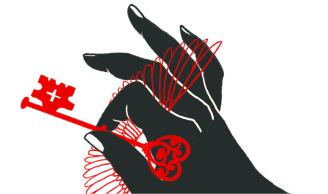
Can you keep all types of customers happy?
Yes, you can. Answer these questions to check whether your website satisfies the needs of each type of a customer:
- Can you identify the type of a customer?
- Is there an onboarding campaign to help new customers type understand the product value and workflow?
- How do you engage customers to buy, subscribe, etc? Are there any automated solutions on your website?
- Can the researchers find all the possible info about your product on the website?
- Is it easy to navigate? How about the checkout: Is the process clear? Fast?
- Is the contacts section visible on the page?
- Does the live agent support answer need to wait more than a minute? Are they attentive and tolerant to everyone?
- What do you offer to reward loyal or special customers?
- Is there a landing page for discounted items? Product sale landing.
- Are your banners attractive and informative enough to get the discount hunter eye?
- Do you reactivate lost customers? How?
Thus, you can see the customer service areas to improve, the strengths and weaknesses of your support, marketing, sales.
If the analysis is the first step to a customer success, the choice of the right tool is the second.
Start improving your website conversion rate with Dashly:
Customer types FAQ
3,4,10 there is no set number of customer types. It depends on the criteria you choose, whether it’s about the fact of purchase, internal and external types of customers, their attitude to a brand and feelings. The most popular classification is according to the sales funnel.
Provide “Just looking” type with fast website navigation and bright design to lay eyes. Researcher customer type needs exhaustive product information. Discount hunters like to be well informed about brand news and sales. Bargain masters are used to get special offers, so make sure your team knows it. The new one needs full-fledged onboarding. Impulsive customers are about fast navigation and easy checkout. Angry types of customers like to be heard and they demand quick solutions. Loyal customers wait to get special offers too. Lost type needs a re-engagement campaign.
Employees and customers are internal and external types of customers with different interests. When the support or a sales manager listens to the customer inactive or selective. And vica versa. They both can feel or notice this in the next questions, conclusions. That causes misunderstanding, then irritation and influences the customer’s purchase decision greatly.
More useful articles:
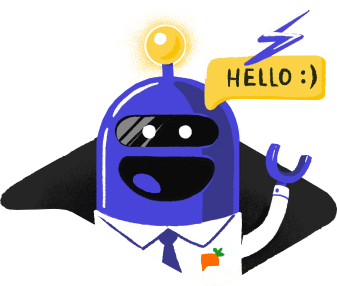


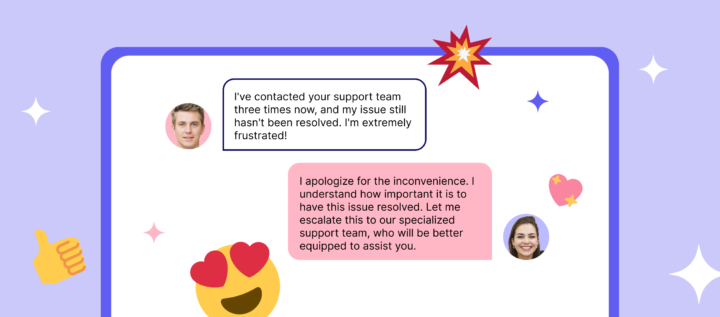
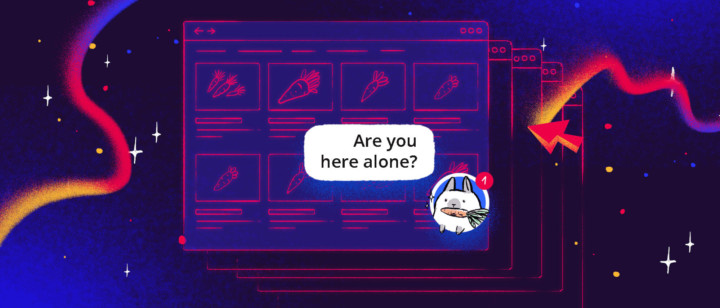
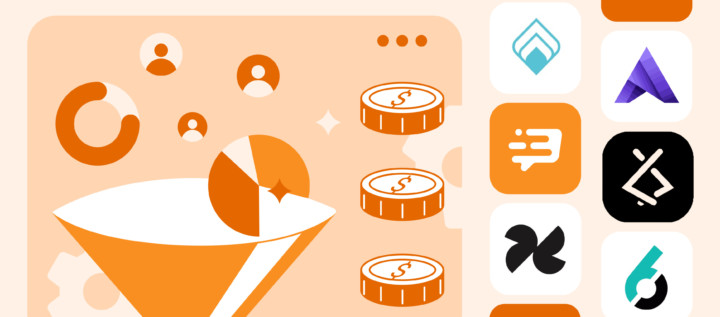
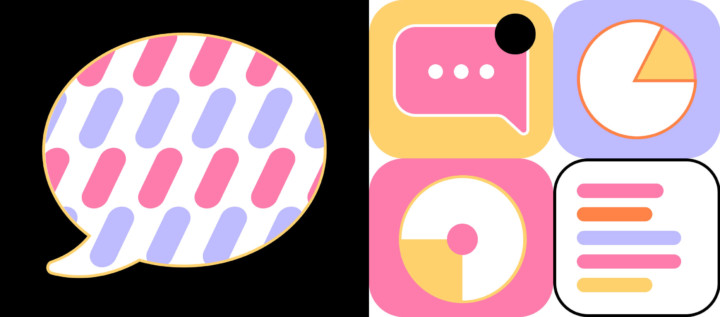
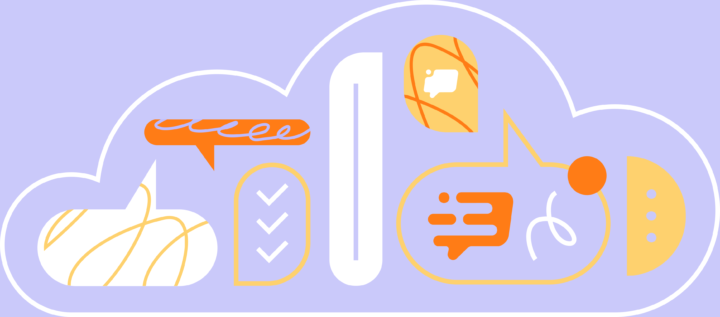
![4 steps as Chief Marketing Officer at a new company [Expert guide]](https://www.dashly.io/blog/wp-content/uploads/2022/10/4-steps-as-Chief-Marketing-Officer-at-a-new-company-Expert-guide-720x317.jpg)